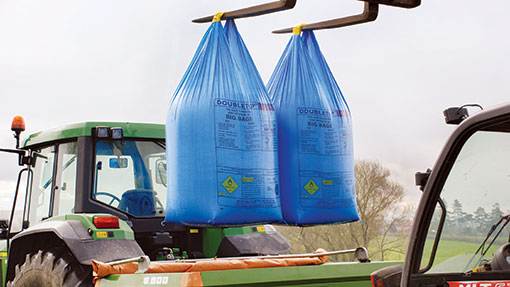Fertiliser stand off as farmers warned to book tonnage

The nitrogen fertiliser market is in a stand-off between reluctant farmer buyers and manufacturers and suppliers who warn that logistics will be an issue unless more orders go on the books.
After drifting for several months, ammonium nitrate prices have firmed slightly to put UK manufactured product on farm at anywhere between £255/t and £265/t for full loads for September delivery. Imported ammonium nitrate is £15/t to £18/t cheaper, depending on origin.
About 50% of expected urea orders have been booked, mostly at the very competitive prices of early summer. However, the past few weeks have seen urea prices rise by £35/t to £40/t to put them at £285/t to £300/t for September through to December.
Growhow will announce a £4/t price rise in its recommended retail price at the end of this week and plans another rise into October, said the firm’s market analyst David Beck.
Gleadell Agriculture’s Calum Findlay said that UK nitrogen sales were 45% behind normal for this point in the season. He expected a stepped approach to price rises would continue while demand was slow.
“The nitrates market is facing a severe squeeze across the whole of western Europe over the next few months,” he said.
| Fertiliser update September 2014 (£/t delivered)* | |||
|---|---|---|---|
| UK 34.5% | Granular urea (46% N) | Imported AN | 0.24.24 |
| £255 | £285-300 | £236-247 | £265-285 |
| Potash (MOP) | Phosphate (DAP) | Phosphate (TSP | |
| £265-285 | £360-385 | £288-305 | |
| *All illustrated prices are based on full loads for cash payment month following. Prices for smaller loads will vary considerably. | |||
Unless UK business picked up very quickly, about 1.7m tonnes of product would have to be delivered between October and March, which was not feasible, he said, advising that farmers adopt a risk management strategy when buying fertiliser, as with grain.
There are many reasons why growers have been reluctant to commit:
- Cash-flow problems
- Poor grain prices
- Harvest pressure
- Lack of storage
- Last October’s sharp nitrogen price drop
- Cropping plans in limbo because of CAP reform.
The better weather this year also meant that grassland demand had been lower than last year, said Wynnstay’s Dave Mitchell.
While it was difficult to estimate changes in demand as a result of post CAP reform cropping plans, no dramatic shifts were expected, said Frontier Agriculture’s fertiliser manager Chris Tye.
However, like others he pointed out the risk of some growers perhaps cutting back on P and K applications because of cash-flow pressure. “On the back of very high yields and big straw yields, we would say that agronomically that’s not the right thing to do.”
While a large volume of urea had been booked and would be delivered, availability for the final quarter of the year had possibly been talked up, he said. “There is a lot of uncertainty in urea.”
FramFarmers’ arable inputs manager Andrew Merton said that it was unlikely that AN prices would see a big drop on the scale of last autumn’s fall.
The medium-term outlook is still for a rise in world nitrogen production capacity but much of this will not supply product until 2017.
